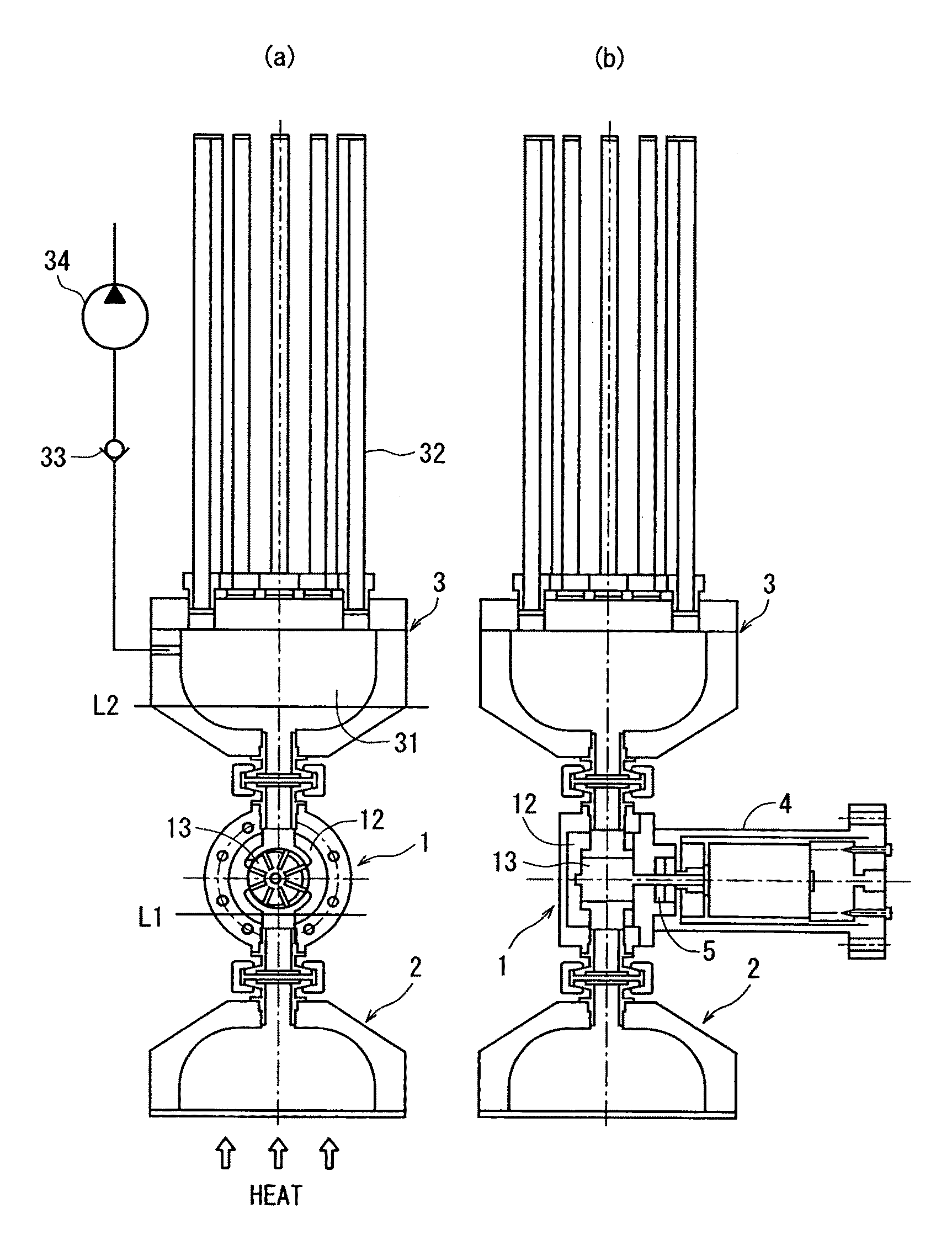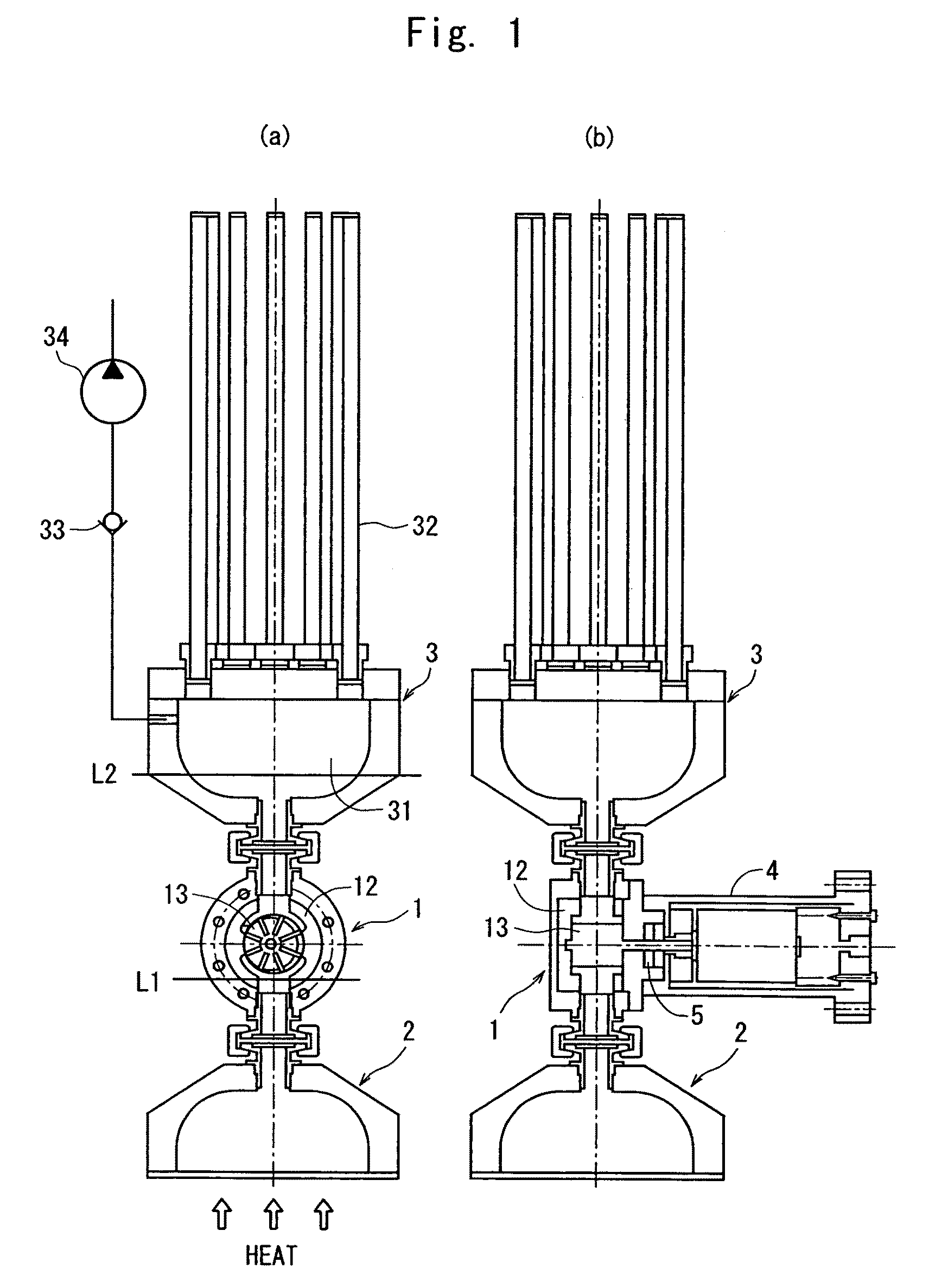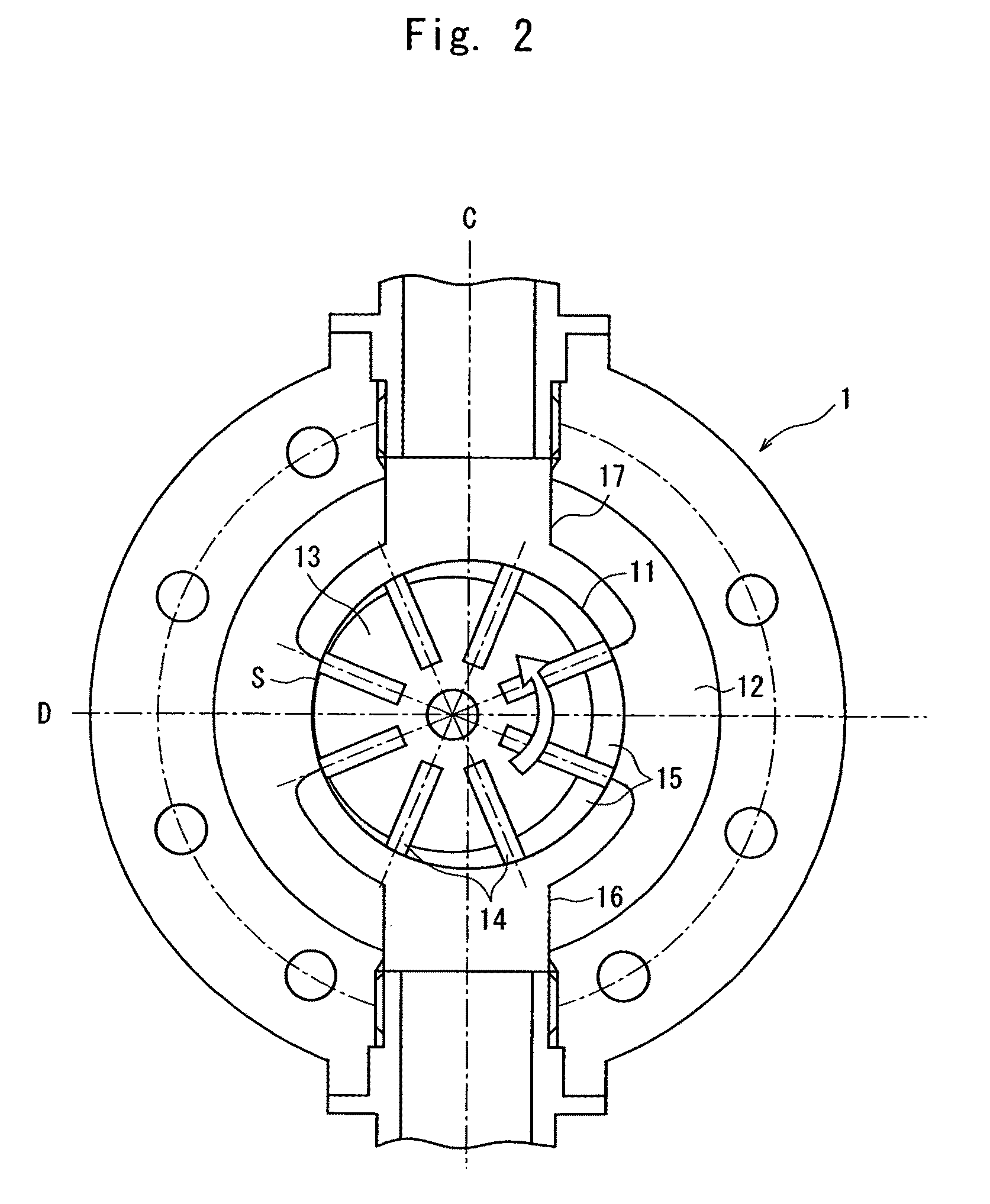Rotary displacement steam engine
a technology of rotary displacement and steam engine, which is applied in the direction of steam generation using hot heat carriers, machines/engines, indirect heat exchangers, etc., can solve the problems of high rotational speed of the turbine, large scale, complex constitution, etc., and achieve constant torque, efficient operation, and power loss
- Summary
- Abstract
- Description
- Claims
- Application Information
AI Technical Summary
Benefits of technology
Problems solved by technology
Method used
Image
Examples
Embodiment Construction
[0026]An embodiment of the invention will now be described in detail with reference to the drawings. FIG. 1 is a sectional view of a steam engine of the present invention, wherein (a) is a central sectional view of a rotor of the displacement engine at right angles with the rotary shaft, and (b) is a sectional view at right angles with (a) and the displacement engine portion includes the rotary shaft of the rotor. FIG. 2 is a sectional view illustrating, on an enlarged scale, the displacement engine.
[0027]The steam engine of the present invention comprises a displacement engine 1 for taking out the power, a steam-generating portion 2 arranged thereunder for generating the steam and a condenser 3 arranged thereover for cooling and condensing the steam. The displacement engine 1, the steam-generating portion 2 and the condenser 3 are connected together through short pipes for coupling and joints, and contain water as an operation fluid therein. When the engine is not in operation, the...
PUM
 Login to View More
Login to View More Abstract
Description
Claims
Application Information
 Login to View More
Login to View More - R&D
- Intellectual Property
- Life Sciences
- Materials
- Tech Scout
- Unparalleled Data Quality
- Higher Quality Content
- 60% Fewer Hallucinations
Browse by: Latest US Patents, China's latest patents, Technical Efficacy Thesaurus, Application Domain, Technology Topic, Popular Technical Reports.
© 2025 PatSnap. All rights reserved.Legal|Privacy policy|Modern Slavery Act Transparency Statement|Sitemap|About US| Contact US: help@patsnap.com



